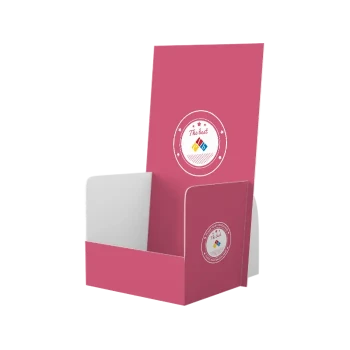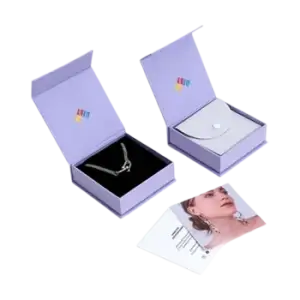3D Printing Technology and
Packaging Industry
Elevate your packaging game by going with the printing trends. 3D printing technology is a novel trend in the packaging industry which awe the potential consumers. Read on to understand why you should shift your printing choices to 3D printing.

3D printing for packaging has been a new trend for a few years. It has led to an increase in personalization and creativity. Even though manufacturers face ongoing challenges in this area, much work is still to be done. To ensure that it becomes the retail sector's future. The market for 3D printing is expected to develop rapidly over the next ten years, according to a recent Smithers analysis titled “The Future of Global 3D Printing to 2027”. By 2027, it will have grown from $5.8 billion in 2016 to $55.8 billion, a rapid 23.0% annual growth rate. The following are some of the factors that clarify how 3D printing and the packaging sector are related:
What Is 3D Printing In Packaging?
3D printing service is one of the most significant technological developments in the industry. It is the technique of generating a three-dimensional solid item from a computerized digital file. Additive manufacturing is used to create the three-dimensional 3D printing packaging. Layers of material are placed down till the project is completed. Each layer represents a thinly sliced horizontal cross-section of the item. Software based on computer-aided design controls the production process. 3D printing allows firms to create complicated shapes. All by using less material than traditional production techniques.
How Is The Packaging Sector Using 3D Printing?

It is not surprising that manufacturing technologies such as 3D printing are crucial for the current and future trend of making everything more customized. Customers use this strategy to customize 3D printed packaging boxes upon their request. Custom packaging designs can be made in compliance with customer specifications. A range of effective design prototypes can also be generated. Custom packaging trends are especially relevant to the food and beverage industry. As they appreciate personalized gifts such as cakes and drinks.
What Market Changes Can 3D Printing Bring About?
According to a PWC survey, 57% of corporations believe 3D printing will be used for after-market products, while 70% believe it will be used for outdated parts shortly. The survey also showed that 24.7 percent of manufacturers intend to use 3D printing in some capacity during the next three years, while 66.7 percent of firms are currently using the technology. Merely 9% of respondents stated they had no intention of using 3D printing at all.
Packaging Digest conducted a similar poll in 2015 to gauge the level of 3D printing adoption in the packaging sector a year earlier. They discovered that more than one-third of respondents were now utilizing a 3D printer for packaging. The remaining respondents intended to start using it soon.
Launch Of 3D Printing In the Packaging Industry

Smart Cups, a US startup, used the technology to produce a variety of energy drinks. The business developed 3D printed biodegradable cups that resemble plastic. The contents of the energy drink are included in the package. As customers add water, the contents are discharged. The package will agitate the glass to ensure even mixing. Smart Cups is expanding its offerings beyond energy drinks to include hot, cold, and fizzy beverages. The technology demonstrates that 3D printing is more than just on-demand packaging materials. Instead, it is a comprehensive function change. It integrates 3D print packaging into the product. Thus, advances in 3D printing will affect practically everything in the future.
Advantages Of 3D Printing Technology

In recent years, 3D printing has acquired market share in the packaging industry. Every year, technology improves, opening up new options for designers and brands to collaborate. 3D printing is one of the best printing methods for packaging. It is useful for producing on-demand custom packaging boxes. This decreases the amount of waste and packaging that ends up in landfills.
Customers also have personalized 3D printed cosmetic packaging and 3d printing food packaging. As a result, it includes anything from a label to a presentation box, depending on the customer's preferences. Furthermore, it accelerates the innovation cycle, resulting in quick 3D printing packaging prototypes.
Another advantage of adopting 3D printing of custom boxes is increased brand recognition. Do you know how they can contribute to the goodwill of your company? Your product packaging's high-quality printing makes a positive impression on your buyers. It will enhance your brand's image and propel your business to new heights of popularity. Thus, high-quality printing helps to increase brand recognition and consumer loyalty.
Many brands have used 3D printer packaging to help them meet sales targets. This is because it ensures that all the printing elements are visible and clear. Textual details that are visible and legible help to boost the image of your brand. Furthermore, improved readability will help others grasp what you want to say to them. Most brands choose current printing technology and color models such as CMYK color model, and RGB color model. This is to increase the market worth of their products. Finally, it boosts sales and makes the firm successful.
Drawbacks of 3D Printing Technology

When it comes to disadvantages, additive manufacturing, and 3D printing take a long time to complete. It incurs a considerable cost for mass production. To transition to 3D print, packaging companies must rethink their packaging machinery. This requires significant investment. Its operations and maintenance necessitate highly technical personnel. These are some of the factors that may make it less acceptable.
Other modern bespoke packaging and printing techniques allow firms to produce hundreds of presentation packaging boxes in nearly no time. As a result, the custom boxes wholesale business is less expensive to establish. It has fewer technical requirements. To support the environment, brands must switch to custom Kraft boxes. Or they may switch to other recyclable alternatives. However, no one knows where we stand in the future. As a result, the growing popularity of 3D printing led to it dominating the packaging sector in the next years.
Financial Difficulties
Novel packaging possibilities have emerged as a result of 3D packaging. One of the most significant restrictions, though, is the price. Even with the decline in 3D printer costs, mass 3D packaging remains more expensive than conventional packaging. Companies engaged in 3D printing, such as The Custom Boxes, are always coming up with new ways. Just to meet the increasing expectations of consumers for greater personalization in the things they use.
Bottom Lines
The Custom Boxes enable seamless integration of 3D printing. In which a great customer experience is the highest priority. In just one platform, we combine all services from qualification to digital storage, on-demand production, and post-processing. This includes all 3D printing technologies and materials on the market. Thus, we offer a solution for any part, without any know-how required by our customer. And most importantly without any initial investment in in-house technologies. So contact us through via chat and order your customized 3D printing boxes now!












